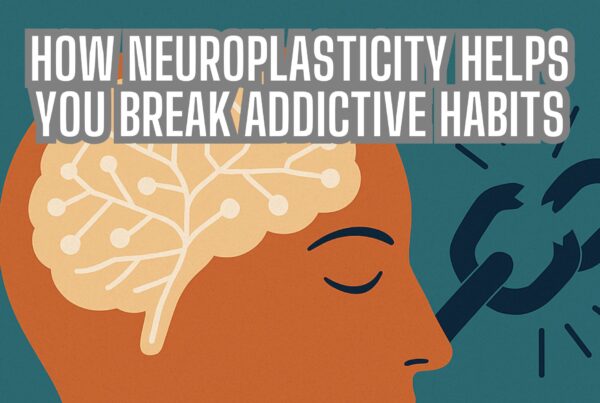Getting Ready for Change – Preparation for New Year’s Resolutions
New Year’s resolutions are a time-honoured tradition and an opportunity to reflect, reset, and recharge. As the clock ticks over to 2024, millions worldwide will embrace this ritual, hoping to create meaningful changes in their lives. However, while making resolutions is exciting, the challenge lies in sticking to them.
In Australia, this tradition is embraced enthusiastically, with 73% of Australians committing to resolutions in 2024. But the reality is sobering: a large percentage of these goals fall by the wayside by mid-February. This guide will not only help you prepare effectively but also provide strategies to overcome common pitfalls and succeed.
Determining what you need to change
The first step in creating lasting change is honest reflection. Look back at the past year and ask yourself:
- What challenges did I face, and how did I cope with them?
- Are my coping mechanisms now working against me?
- Which areas of my life need improvement—physical health, relationships, finances, or mental well-being?
For instance, 49% of Australians aim to improve their physical health in 2024. Whether it’s incorporating exercise, managing stress, or adopting healthier eating habits, consider focusing on areas that will make the most significant difference in your life.
How successful are New Year’s Resolutions?
Year upon year, people promise to make changes to themselves and then, year upon year, they do exactly the same thing which results in limited success. Statistically, most resolutions struggle to last past the initial weeks.
Despite the enthusiasm, research reveals sobering success rates:
- 80% of resolutions fail by Valentine’s Day.
- Only 8% of people achieve their resolutions, though some studies suggest up to 20% find success with the right strategies.
Why the high failure rate? Unrealistic expectations, lack of planning, and insufficient support often derail efforts. The good news? These challenges are surmountable with proper preparation and realistic goal-setting.
Pick Only One Thing
While many of us will tend to only pick one new year’s resolution to focus on, some people get caught up in trying to change everything all at once. You’ll ask them what they want to change and get a response like, “Well, I need to eat less, exercise more, not stress as much and lose some weight. Oh, and I should probably give up smoking too.”
With that much change going on, you’re likely to experience overwhelm and even if you wanted that change, you may find that it becomes all ‘too hard’.
The answer is simple; focus on one thing at one time.
Some of these will overlap; eating less and exercising more will result in losing weight. However, you will also lose weight just from eating less or just from exercising more (providing you don’t eat more or exercise less than what you had previously!). Choose one focus and really take a moment to sit and imagine what that would look like for you.
Frame It Positively
Language matters. Instead of framing resolutions as what you’ll lose or give up, focus on what you’ll gain.
Let’s not talk about ‘losing weight’. People generally tend to go searching for what they lose. I actually like to refer to it as ‘weight management’.
However, let’s really frame it in the positive to help you connect with what it is you want to achieve; you want to ‘feel lighter’.
You want to ‘feel more active and alert’ if you’re exercising more.
You want to ‘be able to breathe easier’ if you give up smoking.
Can you even feel the ‘yes!’ inside your body when you talk about ‘feeling lighter’, ‘being more active and alert’ and ‘being able to breathe easier’ overeating less, exercising more and quitting smoking?
When you talk in the positive, your mind can’t help but imagine what you’re talking about. The focus becomes on the benefit of what you’re wanting to achieve and not on what it is that you’re losing.
Have a Plan for Your Resolution
‘If you fail to plan, you plan to fail’, at least that’s what the old business saying says.
However, it is true.
If you don’t have a plan about how you’re going to achieve your resolution, then you’re leaving it all to chance.
It doesn’t have to be as detailed and complex as a business plan with Gant charts and ROI; but it does need to be about what you are going to do to achieve your results; when, where, how and most importantly WHY. Why are you doing this? What do you want to achieve this for? Who do you want to achieve this for? What are the benefits of achieving this?
Consider what hurdles you’ll experience along the way. What will you do to avoid them? Or jump over them? Or go around them?
What will you need to achieve your resolution? Does it involve researching? Or a membership to a club or resource? How important is it to you really in order to make the changes that you want to make?
What if you don’t know? What if you’re unsure about why you want to make this change? In Gestalt therapy, there is the belief that discomfort and incongruence will occur when there is a gap between the ‘ideal self’ and the ‘real self’. Is this coming into play for you? Do you feel that you want to change but you’re unsure about why or the real motivation?
What will you do when/if you fail for a day? Are you likely to just throw it all in if you ‘fall off the wagon’? If so, what can you do to dig into those internal resources of resilience and self-compassion and pick yourself back up again? Being aware of these NOW is going to help you when you kick off the new year.
Understanding habits
Do a little research on how habits work. Books such as ‘Atomic Habits’ by James Clear and ‘The Power of Habits’ by Charles Duhigg will offer you some insight into how habits are created and maintained, which will allow you to work with those existing ‘bad’ habits better and transform them into a power for good.
One of the key things to recognise here is that our habits cannot be deleted or erased, but they can be revised or refined.
By considering what you will do instead of the old behaviour, you’re taking those first steps to identifying some of the biggest challenges you’ll face once you begin that transformation process.
Small steps work best
When making your plan, don’t go for giant leaps and strides. These will simply end up becoming too hard, too difficult, too much work and you’ll most likely give up. However, when you start to make small steps, it becomes so much more achievable.
It just needs to be one small step different. Just do one thing differently to begin with. Do it for a week. See how it feels. Does it work? If not, do something different again.
Einstein once famously said that the definition of insanity was ‘doing the same thing over and over again and expecting a different result.’ Why repeat behaviours that are leading you to this dissatisfaction? What have you done to yourself to deserve this?
How do you know if it is realistic? Scale it!
For example, say you decide that your ‘one thing different’ is to go for a walk three times a week after work.
After that, ask yourself (honestly) on a scale of 1 to 10, with 1 being not at all and 10 being done, how likely are you to achieve this task.
If you (honestly) respond with anything less than an 8, you need to review the task. You might’ve come in with a 6, so ask yourself what you would need to do to get that 6 to a 7 (or an 8).
If you find that the task just came in at a 5 or lower, then you really need to go back to square one and explore WHY this change is IMPORTANT to YOU.
Make it visual and share with the world
We respond to visual cues, so you might want to consider creating a mood board that you’ll see every day with pictures that are going to connect you to the ‘why’ for your change.
Put up pictures of you being fitter and thinner. Or pictures of who you’re doing this for; your parents or your partner or your children. Images of what you will achieve out of it; being more comfortable, more happy, more content.
Let people know what you’re doing. Share your journey. It will inspire others and it will make you accountable for your own change. You can lead the revolution to prove that change is possible when you’re ready to make that change and you’re engaged with it in a meaningful way.
Getting Ready for New Years!
In summary, preparing for your New Year’s resolutions involves setting specific and achievable goals, making a plan, getting organized, focusing on one or two goals at a time, finding accountability, celebrating your successes, and being willing to make adjustments as needed. With a little bit of planning and preparation, you can set yourself up for success and make your New Year’s resolutions a reality.
These points are all going to help you leading up to New Year’s.
Next time, we’ll explore what happens once January 1st hits to help you keep connected with the goal, stay on track and enjoy the benefits of change.
FAQs
- What’s the best way to stick to New Year’s resolutions? Start small, set realistic goals, and create a plan with built-in accountability.
- How do I recover if I break my resolution? A slip doesn’t mean failure. Reflect on what went wrong and adjust your plan.
- Can hypnotherapy help with resolutions? Yes! Hypnotherapy can help reframe your mindset, improve focus, and boost confidence in achieving goals.
Release Hypnosis Melbourne Hypnotherapy
Since 2016, Lawrence Akers has been working under the name Release Hypnosis offering Hypnotherapy and ACT based work to the people of Melbourne or an online service. Based on St Kilda Rd, Release Hypnosis is an easy and convenient location to get to and accessible by the ANZAC station train and tram stop. Release Hypnosis can help with a wide range of presenting issues, and I offer a free 30 minute no obligation discovery call for those who are unsure if hypnotherapy is the right way forward for them.
Book Your FREE 20 Minute Consultation With Release Hypnosis NOW!
You may also like to read:
How To Stop The Negative Thoughts From Taking Control
The Mindfulness Toolkit
Isn’t It Time To Tell That Smoking Habit To Butt Out Of Your Life?
How To Get The Best From Your Online Hypnotherapy Session








